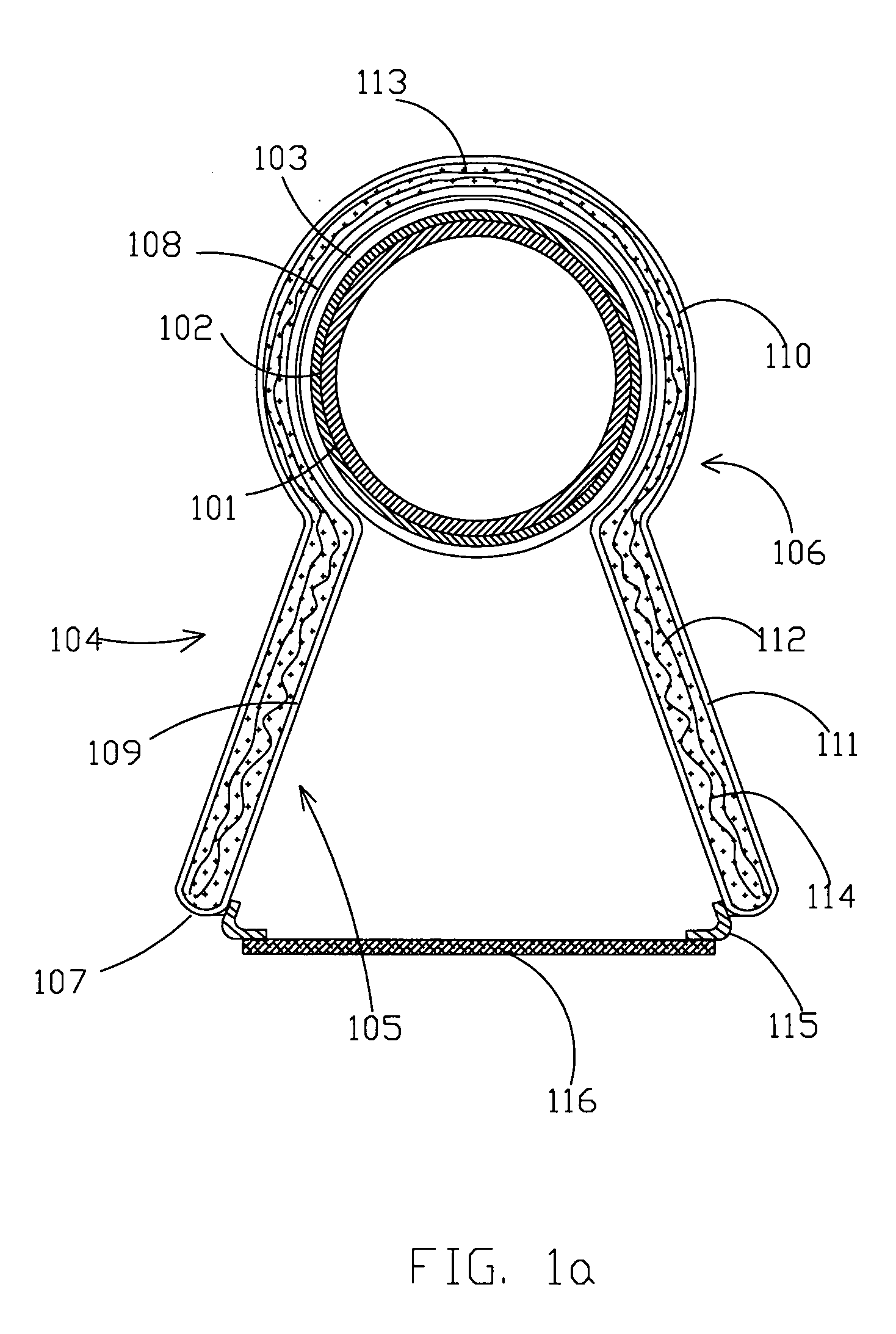Solar radiation modular collector
a technology of solar radiation and modular collectors, which is applied in the direction of solar heat collectors, heat collector mounting/supports, solar-ray concentration, etc., can solve the problems of inability to modularly insulate thermally the radiation receiving pipe, high cost and complexity of sealing the metal pipe of the receiver with the glass envelope, and low strength of the glass envelope, etc., to achieve the effect of simplifying the manufacturing process of metal envelopes and reducing heat loss
- Summary
- Abstract
- Description
- Claims
- Application Information
AI Technical Summary
Benefits of technology
Problems solved by technology
Method used
Image
Examples
Embodiment Construction
[0088]FIG. 1a, FIG. 1b and FIG. 1c show the transverse cross-sections of the receiver of concentrated solar radiation for the embodiment of the present invention featuring a concentrating single-curvature unit. The figures show an exploded transverse cross-section of the metal envelope of the receiver and its glazing and an exploded transverse cross-section of a radiation receiving pipe of the receiver.
[0089] This embodiment of the device according to the present invention includes a radiation receiving pipe 101 with a selective coating 102 of its outer surface and low circular ribs 103, and a metal envelope 104. Preferably coating 102 is made of selective coating material (preferably absorbing strongly in the visible range but only weakly emitting in the infra-red range of light). As previously described, radiation receiving pipe 101 receives radiation and is insulated by metal envelope 104.
[0090] Metal envelope 104 includes an internal elongated section 105 and an external elong...
PUM
 Login to View More
Login to View More Abstract
Description
Claims
Application Information
 Login to View More
Login to View More - R&D
- Intellectual Property
- Life Sciences
- Materials
- Tech Scout
- Unparalleled Data Quality
- Higher Quality Content
- 60% Fewer Hallucinations
Browse by: Latest US Patents, China's latest patents, Technical Efficacy Thesaurus, Application Domain, Technology Topic, Popular Technical Reports.
© 2025 PatSnap. All rights reserved.Legal|Privacy policy|Modern Slavery Act Transparency Statement|Sitemap|About US| Contact US: help@patsnap.com



